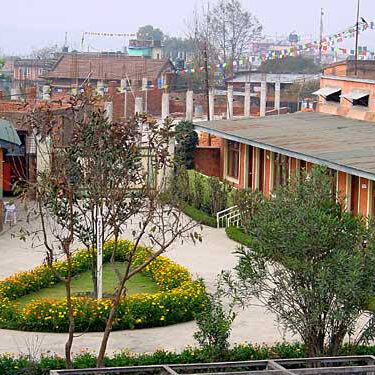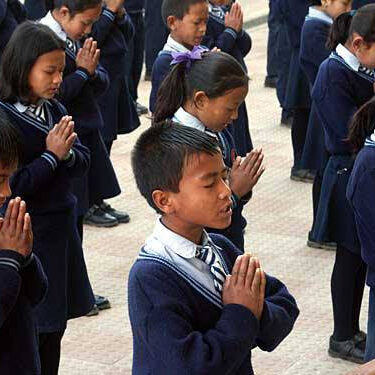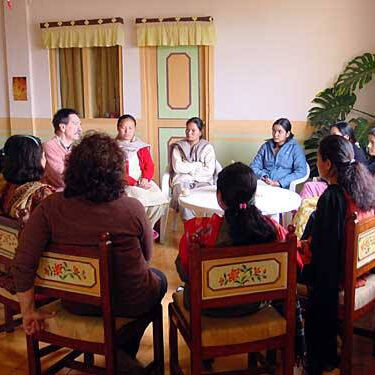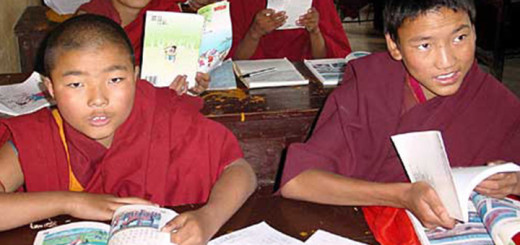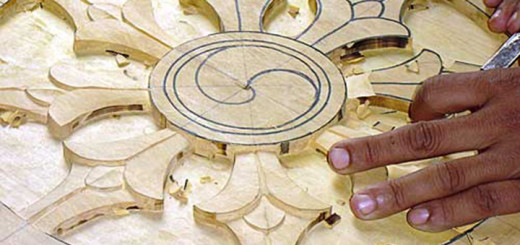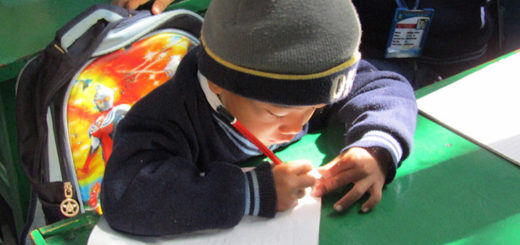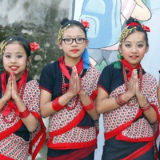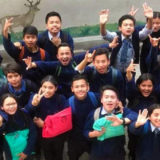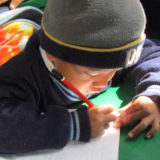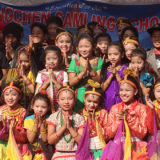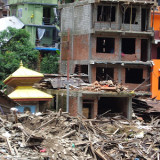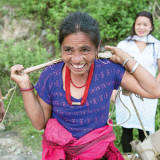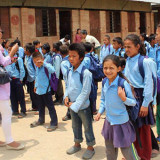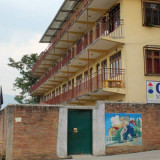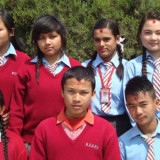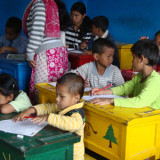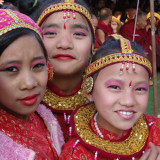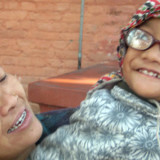Nepal 2004
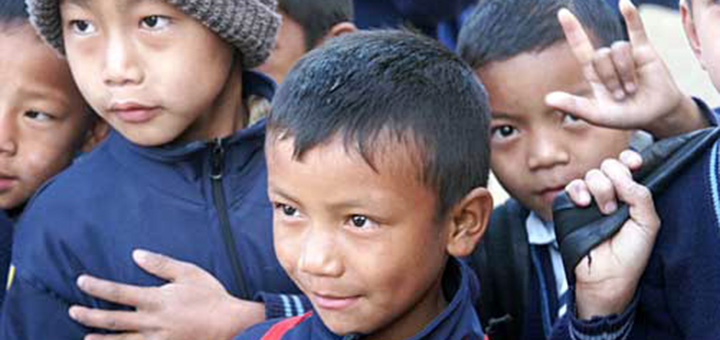
Himalayan Healing Centre Clinic
Reaching into the Future
The activities of the Himalayan Healing Centre Clinic, during the months January to October of this year, have been diverse and far-reaching for the local community that it serves. Over a ten month period the Clinic has provided medical care and attention to no less than 11,656 local people. In an area of Kathmandu that is home to large numbers of poor and needy people, the Clinic is already well known for providing, at a minimal cost and freely in cases of great hardship, services that would otherwise be unattainable for most. In fact the Clinic was the site of an extremely succesful “Free Medical Camp” held in the month of July which was used by 842 patients (not included in Clinic data). The Healing Centre Clinic however offers a much stabler medical structure to the local community with family planning activities, a dental studio, a small analysis laboratory, traditional herbal medicines as well as general medicine. The Clinic not only reaches out to the local community through its services and various programmes such as Dots (Directly Observed Treatments for Tuberculosis) but it also reaches into the future by implementing vaccination and immunisation programmes that will save thousands of children in the following years from needless pain, suffering and disability…
To keep people updated on the activities of the clinic, the staff of the Himalayan Healing Centre have made available the following month by month report.
Gangchen Samling School
Facing the challenges of Nepalese society
In the hills that surround the Kathmandu Valley, on the outskirts of the city, is the neighbourhood of Anandpur, Boudha. Here, thanks to the financial support of local businessman Tsetan Gyurme, a small nursery school using the Montessori educational method has been functioning for more than fifteen years. It is thanks to this nursery, that prides itself on respecting and stimulating the culture of each child, that numerous local children have acquired, free of charge, the necessary knowledge to start their primary educational cycle.
During the scholastic year 2003/2004 a new building, situated next to this nursery, was built and inaugurated as Gangchen Samling School, finally offering both primary and secondary education. The school is officially registered with the Nepal Government and follows the official programmes preset by them. In the period 2003/2004, with a staff of 15 young teachers, Gangchen Samling School taught 245 students, successfully completing the scholastic year for students from nursery classes to class 5. From April 2004, the start of the academic year in Nepal, the numbers of children studying in the school increased and the school expanded to include class six.
The three-storey building has luminous classrooms and is well equipped. Each floor has bathroom facilities and filtered drinking water. There are offices for the school management and library, and spaces pre-destined for the future establishment of laboratories dedicated to language and computers as well as to science and technology. Also foreseen are sports fields and out door play facilities.
The majority of students attending the school are sponsored at a distance by westerners through the association Help in Action, those remaining are the sons and daughters of workers from Samling Carpet Factory whose directors are dedicated to improving the living conditions of their workers by offering them free school and medical care. All the students of the school receive periodic medical check-ups from the Himalayan Healing Centre Clinic Clinic.
Nepal is rich in culture, tradition and popular wisdom and is the crossroads of profound and active cultures like those of Tibet and India. The country of Nepal offers a multiethnic and multi-religious practical spirituality that the Gangchen Samling School intends to nourish and preserve. The inclusion of spiritual values, common to all religious traditions, is seen to be of central importance. Gangchen Samling School therefore aims to unite quality education with the introduction of formative traits, often referred to as non-formal, which will help to prepare youngsters to live a balanced life in from a psychological and emotional point of view.
The continuous formation of teachers is the base of any modern educational establishment. The school director and management committee are planning to organise courses and training for all school staff. Volunteer western teachers will soon be welcome to plan and lead workshops for training trainers (teaching and non-teaching staff) in all subject areas, presented in intensive and brief periods of time.
Education is an essential tool necessary to live fully all the different moments of our human existence and not only those linked to the work environment or profession. In this way we are creating a basis for the formation of balanced individuals, professionally competent who can act as peace messengers in both their immediate surroundings and wider society.
School Meeting
Western volunteers, teachers and trainers, giving courses to train young teachers in the Gangchen Samling School: Here we can see a seminar in Mathematics and a teachers meeting in Pedagogy.
Festivals of Nepal
All festivals mark some aspect of life for the Nepalese people. For this reason there are around 50 holidays – a total of around 160 days each year! These days of common celebration aid people to fulfil their religious commitments, to express their respect for the earth, natural elements and other people, as well as allowing them to socialise and break from the monotonous hardships of their everyday life. All of Nepal’s festival celebrate not such religion but life itself.
February Festivals
Losar
Tibetan New Year, or Losar, is a time for prayer, feasting and family. The Losar festival is marked by prayer ceremonies in Buddhist monasteries. On the fourth day of Losar the Tibetan community gathers at Boudhanath Stupa dressed in their best clothes to offer incense, put up prayer flags and make prayers. After auspicious prayers, traditional Tibetan songs and dance the crowds disperse to continue their celebrations with friends and family.
Shiva Ratri
This festival draws thousands of pilgrims to the Pashupatinath Temple, one of the four great Shiva shrines. The area surrounding the temple is transformed into a fairground with vendors, tea sellers, beggars and pilgrims huddling around campfires. A side attraction are the hundreds of saddhu, Hindu ascetics, who perform incredible acts of austerity. During the day thousands of people bathe in the Bagmati River.
September Festivals
Teej/Rishi Panchami
These are both exclusively women’s celebrations denoted by fasting and purification. Teej begins with a communal feast in each home as the women prepare themselves for the strict fast that will take place in the next days. The fast replicates the 3,600 years of austerities the goddess Parvati performed to attract her husband Shiva. Taking part in the fast is said to ensure a husband’s longlife. On the first morning of the fast women gather in Pashupatinath to bathe in the sacred Bagmati river. After this, wearing a red wedding sari and gold jewellery they dance and sing praises to Shiva. Two days later on Rishi Panchami, the women gather again at the river for another ritual bath and prayer ceremony to purify them from accidentally touching a man during menstruation.
Indra Jatra
Indra Jatra marks the end of the monsoon season and the beginning of the time to harvest. This festival, lasting eight days, consists of performances of masked dances and costumed dramas. Ancient images of the god Bhairab are put on display for this week each year. The third day of Indra Jatra marks the start of the Kumari Jatra (a festival within a festival). Thousands of women gather in Durber Square in Kathmandu to view the arrival of the King and the appearance of the virgin goddess Kumari. For the next three evenings the Kumari, attended by two boys representing Bhairab and Ganesh, travels around the city in a gilded chariot. On the final night the King of Nepal receives tika from the Kumari, affirming his right to rule for another year.
October festivals
Dasain
A ten day celebration: a time of gifts, feasting and visiting friends and family. Symbolically it is a harvest festival or thanksgiving and the re-energising of natural powers. Houses are cleaned and every family member gets a new set of clothes, special food and drink is prepared and everyone, at least for a few days, tries to return to their family home. All office and businesses close during the festival.
Each night of the festival is dedicated to a different form of the mother-goddess. Altars are established in every home and seeds are placed in a covered pot to sprout. Temples are crowded and in the evenings masked dance groups perform in the three cities of the valley. On the seventh day fruit and flowers are brought from the royal family’s ancestral home of Gorkha and are presented to the king. The eighth night sees blood sacrifices to Durga; every family that can afford it will offer an animal. This offering is then transformed into a feast and for many families this is the only time in the year that they get to eat meat. Sacrifices made on the ninth day are believed to honour tools of trade. The god Bhairab is placated with blood sacrifices to protect motorcycles and taxis, for example, from accidents in the coming year. On the tenth day the covered pot is opened and the sprouted grain distributed. Families dressed in their best clothes visit older relatives to receive their blessing.
November Festivals
Tihar
Tihar – the festival of light. This is a beautiful celebration honouring Yama, the lord of death. The first two days are dedicated to the messengers of Yama – the dog and the crow. The third day sees the sacred cows of the valley garlanded and fed and houses are cleaned from top to bottom. At nightfall hundreds of tiny lamps are placed in doors and windows to welcome Lakshmi, the goddess of wealth and good fortune, who drawn by the lights and cleanliness is said to visit homes and bestow prosperity. On the final day of this festival sisters perform prayer ceremonies for the longlife of their brothers and even married women return to their parents’ homes for this ritual.

